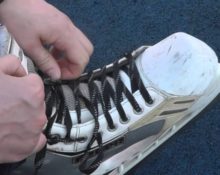Many people are familiar with the situation when, when buying new shoes, the joy of the purchase disappears: when walking, the laces constantly come undone. This can also happen with old shoes if you bought new laces. It would seem that the problem is not so significant, but in reality it threatens not only the loss of a shoe or sneaker, but also a fall if you step on a lace. Our nerves also suffer. In this regard, it is necessary to find a way to put your shoes in order.
What can I do to prevent my shoelaces from coming undone?
First you need to decide why your shoelaces are untied. The reasons may be as follows:
 laces are made of slippery synthetic material;
laces are made of slippery synthetic material;- they are not flat, but in the form of a cord with a round cut;
- the “bow” doesn’t tighten well;
- the ends of the “bow” remain too long, they dangle when walking or running and eventually stretch the knot;
- The “bow” is not tied correctly at all.
To solve the first problem, you should replace the laces with cotton ones.. They will not slide, but rather even stick together. Also, use soft, rather than rough, laces; they also have the ability to hold tighter.
If you do not want to replace the laces with new ones, then try hiding the knotted knot inside. There they will fit snugly to the leg and boot, which will prevent them from coming undone.
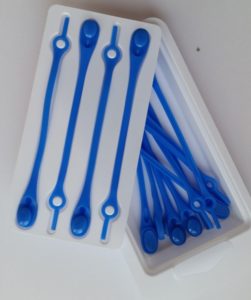 The third way to solve the problem is replace woven laces with silicone ones. They are fasteners that cling to opposite holes in the shoe and are tightened to the desired size. Their main drawback is that they only match the style of sports shoes, for example, sneakers or sneakers, but not classic boots.
The third way to solve the problem is replace woven laces with silicone ones. They are fasteners that cling to opposite holes in the shoe and are tightened to the desired size. Their main drawback is that they only match the style of sports shoes, for example, sneakers or sneakers, but not classic boots.
Finally, the most convenient option is changing the method of tying the “bow” (or “rabbit ears”), which parents teach their children from childhood. At first glance, it seems that it will be impossible to relearn, but this is not so. A few days of training is enough and you will be able to tie new knots on your favorite boots.
Methods for securing knots
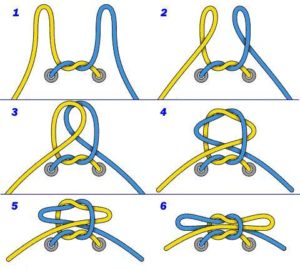 If we have no desire to learn new nodes, the easiest way out would be to improve the usual way of tying. To do this, make an ordinary “bow” on the shoe, but leave the ears longer. Then tie the resulting loops together again into a simple single knot. You can make it tighter, it comes undone without any problems.
If we have no desire to learn new nodes, the easiest way out would be to improve the usual way of tying. To do this, make an ordinary “bow” on the shoe, but leave the ears longer. Then tie the resulting loops together again into a simple single knot. You can make it tighter, it comes undone without any problems.
This node can be fixed with one more simple action. To do this, thread one or both loops through the hole twice. With such a knot, the process of removing shoes will last a few seconds, but the result will definitely be worth it.
We also recommend trying to slightly change your usual tying method.To do this, pay attention to the picture. After the first knot is made, insert the loop of the red lace in your right hand (photo in the lower left corner) not from below the left, but from above it. Ready!
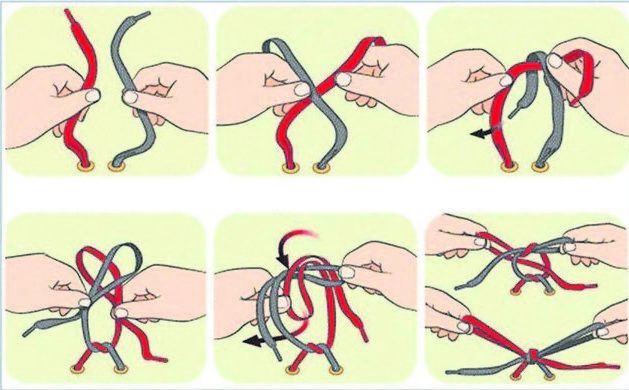
“Long-lasting” nodes
Try to master a few knots that will not come undone even with round laces, long walking or playing sports. Here are some of them:
 Jan Figgen's knot. Start by making a single knot, then form two loops at each end. Next, the loops are inserted through each other and tightened. An improved version - “Mega Node” - is produced according to the same scheme, but with some clarification: “spiral” loops are formed at the ends in several turns, and then passed through each other;
Jan Figgen's knot. Start by making a single knot, then form two loops at each end. Next, the loops are inserted through each other and tightened. An improved version - “Mega Node” - is produced according to the same scheme, but with some clarification: “spiral” loops are formed at the ends in several turns, and then passed through each other;- double slip knot. To perform it, you need to create two loops and cross them, then bend the ends of the loops in opposite directions. Then all that remains is to thread them through the bottom and tighten until comfortable;
 reef (sea) node. This this option is not only very strong, but also good for tying short ends. The technology is quite simple: after tying an ordinary knot, cross the free ends and make two half-knots, as shown in the diagram. The result is not at all similar to the usual “bow”. To untie it, just pull one end, and simply slide the rest of the knot up;
reef (sea) node. This this option is not only very strong, but also good for tying short ends. The technology is quite simple: after tying an ordinary knot, cross the free ends and make two half-knots, as shown in the diagram. The result is not at all similar to the usual “bow”. To untie it, just pull one end, and simply slide the rest of the knot up; surgical node. In terms of execution, it differs little from the traditional one, so it is convenient. Its difference is that one of the loops is passed through the hole several times and tightened.
surgical node. In terms of execution, it differs little from the traditional one, so it is convenient. Its difference is that one of the loops is passed through the hole several times and tightened.


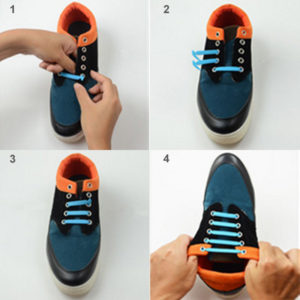 laces are made of slippery synthetic material;
laces are made of slippery synthetic material; Jan Figgen's knot. Start by making a single knot, then form two loops at each end. Next, the loops are inserted through each other and tightened. An improved version - “Mega Node” - is produced according to the same scheme, but with some clarification: “spiral” loops are formed at the ends in several turns, and then passed through each other;
Jan Figgen's knot. Start by making a single knot, then form two loops at each end. Next, the loops are inserted through each other and tightened. An improved version - “Mega Node” - is produced according to the same scheme, but with some clarification: “spiral” loops are formed at the ends in several turns, and then passed through each other;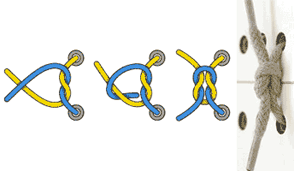 reef (sea) node. This this option is not only very strong, but also good for tying short ends. The technology is quite simple: after tying an ordinary knot, cross the free ends and make two half-knots, as shown in the diagram. The result is not at all similar to the usual “bow”. To untie it, just pull one end, and simply slide the rest of the knot up;
reef (sea) node. This this option is not only very strong, but also good for tying short ends. The technology is quite simple: after tying an ordinary knot, cross the free ends and make two half-knots, as shown in the diagram. The result is not at all similar to the usual “bow”. To untie it, just pull one end, and simply slide the rest of the knot up; surgical node. In terms of execution, it differs little from the traditional one, so it is convenient. Its difference is that one of the loops is passed through the hole several times and tightened.
surgical node. In terms of execution, it differs little from the traditional one, so it is convenient. Its difference is that one of the loops is passed through the hole several times and tightened. 0
0




